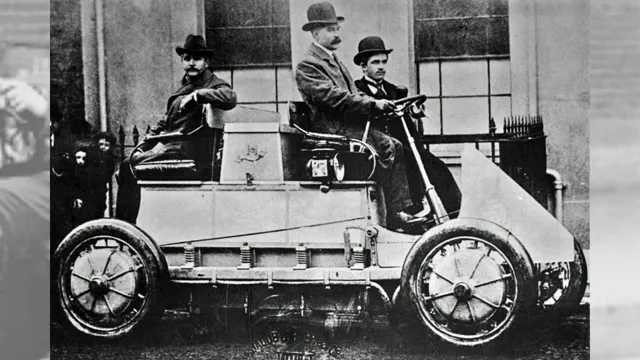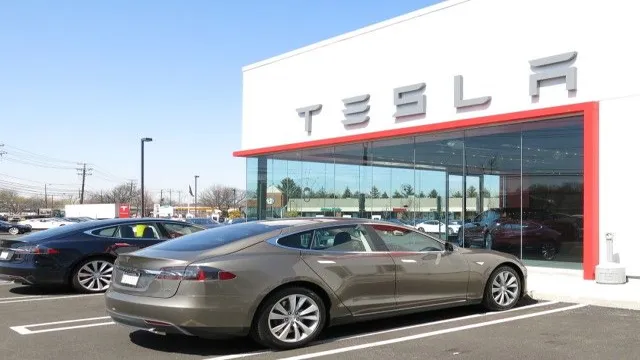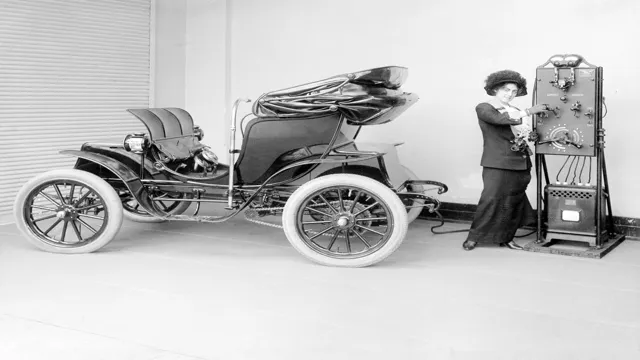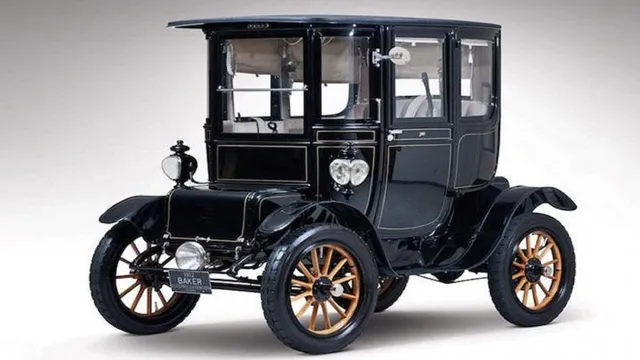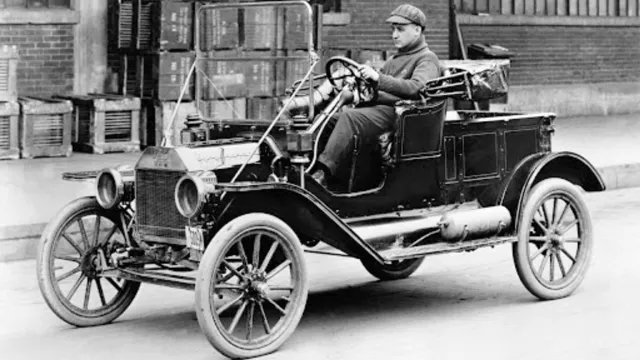The Electrifying Rise of Electric Cars in California: Tracing the Rich History of America’s Love Affair with Sustainable Mobility
Do you know that California has been at the forefront of electric car development for decades? The electric car evolution in California history is a fascinating story of innovation and progress, which has led to the rise of electric vehicles as a viable alternative to gas-powered cars. California’s environmental regulations, combined with a growing concern for reducing carbon emissions and the need for sustainable transportation, have made it a natural leader in this field. From early electric prototypes of the 1800s to the emergence of Tesla, today, California continues to lead the way in electric car evolution.
In this blog post, we’ll delve into the rich and varied history of electric cars in California and explore the pioneers, inventors, and innovators who have driven this transformation. We’ll also examine the policy incentives, technological advancements, and social movements that have made electric cars a reality. So buckle up and get ready to learn about the electrifying journey of electric cars in California.
Early Innovators and Prototypes
The history of electric cars in the United States is a complex and interesting one. While many people are aware of the recent surge in electric car popularity, few realize that the concept of an electric car has been around for over a century. In fact, the earliest models were developed in California in the late 1800s.
One of the early innovators was a man named William Morrison, who built the first successful electric car in 189 Morrison’s car could travel up to 14 miles per hour and had a range of 30 miles on a single charge. However, due to the high cost of batteries and the low demand for electric vehicles, the technology did not catch on until much later.
Despite this, California remained at the forefront of electric car development throughout the 20th century, with prototypes and experimental models being developed by various manufacturers. In recent years, with the growing concern over environmental issues, electric cars have once again gained popularity, and California has become a hub for the development and production of these vehicles.
Stanford’s Solar Car Project
Stanford’s Solar Car Project was a revolutionary effort that aimed to create a solar-powered vehicle that could compete in international races. The project started in the late 1980s, when a group of ambitious students decided to build a prototype solar car from scratch. The first car was a small, lightweight vehicle that could reach speeds of up to 40 mph and had a range of over 100 miles.
However, the team quickly realized that the car’s design was not aerodynamic enough to compete with other solar cars. Over the years, the team built several more prototypes, each one more advanced than the last. They experimented with new materials, such as carbon fiber and Kevlar, and developed new solar panels that were more efficient and powerful.
Today, the Stanford Solar Car Project is one of the most successful student-run organizations in the world, and their cars have won multiple international competitions. Their early innovations and prototypes laid the groundwork for what has become a trailblazing effort in sustainable transportation.
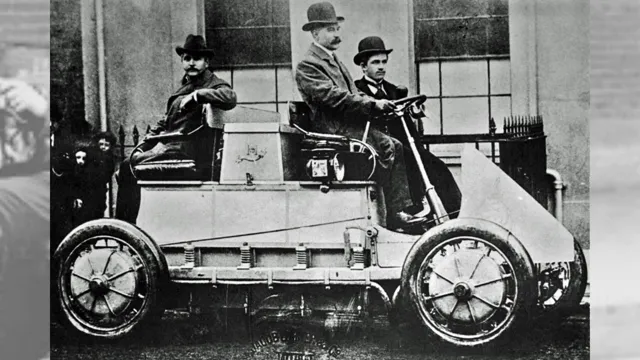
GM’s EV1
GM’s EV1 was an early innovator in the electric vehicle space. While electric vehicles are becoming more prevalent today, the EV1 was a prototype that was way ahead of its time. The EV1, which was produced by General Motors from 1996 to 2003, was one of the first modern electric vehicles and was only available for lease in California and Arizona.
It was a two-seater car that boasted impressive range and performance, with a top speed of 80 mph and a range of up to 140 miles. Unfortunately, the EV1 was eventually canceled due to a variety of reasons, including high production costs and limited demand. Despite its short-lived production, the EV1 paved the way for other electric vehicle models to come and is still remembered as a groundbreaking prototype in the EV industry.
Rise of Tesla and the Modern Electric Car Era
The history of electric cars in the United States dates back to the early 1900s when they were first introduced as a luxury item for the wealthy elite. However, it wasn’t until the oil crisis of the 1970s that electric cars gained mainstream attention. With the state of California leading the charge in emissions regulations, automakers were forced to produce more fuel-efficient and environmentally friendly vehicles.
This led to the creation of the first mass-produced electric vehicle, the GM EV1, in 199 However, it was short-lived as GM discontinued the model due to financial reasons. Fast forward to the early 2000s, and Tesla emerged as a front-runner in the electric car market despite facing challenges from traditional automakers.
The company’s innovative technology, sleek designs, and celebrity endorsements helped to change the perception of electric cars from being slow and unattractive to being fast, luxurious, and eco-friendly. Today, electric cars have become increasingly popular, with California remaining a key market for these vehicles. Thanks to advancements in battery technology and charging infrastructure, the modern electric car era is now in full swing, and the future looks bright for the automotive industry’s electric revolution.
Tesla Roadster
The Tesla Roadster is more than just a high-performance electric car. It represents the rise of Tesla and the modern electric car era, challenging traditional gas-powered vehicles and revolutionizing the automotive industry. The Roadster boasts impressive specs like a 0-60 mph acceleration in just
9 seconds and a top speed of over 250 mph, all fueled by its innovative battery technology. But it’s not just about speed and power. The Roadster also has a range of over 600 miles on a single charge, making it a viable option for long-distance travel.
Its sleek design and eco-friendly performance have attracted a cult-like following, with enthusiasts and early adopters eagerly anticipating its release. Tesla’s success with the Roadster has paved the way for other electric car manufacturers, proving that a sustainable future with clean energy cars is not only possible but also profitable. The Tesla Roadster is more than just a car.
It’s a symbol of a shift towards a greener future and a testament to human ingenuity and innovation.
Model S and Model X
The Model S and Model X from Tesla represent a major shift in the automotive industry and the beginning of the modern electric car era. These sleek vehicles are not only visually stunning but also pack a serious punch in terms of performance. When Elon Musk unveiled the Model S back in 2012, many people were skeptical of its electric powertrain and limited range.
However, the Model S quickly proved its worth, offering unparalleled acceleration, impressive range, and an overall driving experience that won over not just EV enthusiasts, but car enthusiasts in general. The Model X followed suit shortly after, offering added convenience and luxury features to the already impressive Model S platform. These electric vehicles have shattered expectations and proven that going electric doesn’t mean sacrificing power, style, or convenience.
As Tesla continues to innovate and improve upon its battery technology, the future looks bright for the Model S and Model X, as well as the electric car industry as a whole.
Model 3 and the Future
The rise of Tesla has brought forth the modern era of electric cars and has significantly impacted the automobile industry. The Model 3, a mid-range electric car, has played a crucial role in the company’s success. With its sleek design, impressive performance and range, it has emerged as the leader in the electric car market.
This vehicle continues to push the boundaries of electric technology, setting new standards for the future of automobiles. Tesla’s innovative engineering has allowed for their vehicles to have increased efficiency and decreased reliance on fossil fuels. As more people become environmentally conscious, Tesla’s Model 3 has become a popular choice for those who want to reduce their carbon footprint without sacrificing performance.
The Model 3, along with other electric vehicles, represents a shift towards a cleaner and more sustainable future in the automobile industry.
Government Incentives and Regulations
The US electric car history is closely linked with California, which has played a pivotal role in promoting the electric car industry. In response to concerns about air pollution, California became the first state to introduce emissions standards for automobiles in the 1960s. Subsequently, California also became the first state to mandate zero-emission vehicle (ZEV) standards for automakers in 1990.
This move provided a major impetus for the development of electric cars in the US, including the famous GM EV1, which was introduced in California in 199 In addition to regulatory standards, California has also provided incentives for EV buyers, including tax credits, HOV lane access, and reduced registration fees. Today, California remains a leader in the electric car industry and has set ambitious targets for zero-emissions vehicles, further spurring innovation and investment in the sector.
As a result, the state has become a hub for EV development, attracting major automakers and startups alike. Overall, government incentives and regulations have played a critical role in the growth of the electric car industry, helping to transform it from a niche market to a mainstream option for vehicle buyers.
Clean Vehicle Rebate Project
Government incentives and regulations play a significant role in advancing the adoption of clean energy technologies such as electric vehicles. One of the most impactful programs in this regard is the Clean Vehicle Rebate Project (CVRP), run by the California Air Resources Board (CARB). The CVRP offers rebates of up to $7,000 for eligible Californians who purchase or lease new, eligible zero-emission vehicles.
The program is funded by the state’s cap-and-trade program, which requires businesses to purchase carbon credits to offset their greenhouse gas emissions. California is not alone in offering financial incentives for zero-emission vehicles, as many other states and countries have similar programs in place. These incentives help make electric cars more affordable and accessible to consumers, which is crucial to reducing transportation emissions and fighting climate change.
At the same time, governments are also implementing regulations on car manufacturers to produce more electric and hybrid vehicles, further driving the transition towards a cleaner transportation future.
Zero Emission Vehicle Mandate
The implementation of a zero-emission vehicle mandate is a government incentive that aims to reduce the carbon footprint of the transportation sector. This regulation requires automakers to sell a certain percentage of electric or low-emissions vehicles in their fleet each year. This mandate incentivizes the production and purchase of zero-emission vehicles by providing a regulatory framework for automakers to follow.
Additionally, the government offers tax credits and other financial incentives for consumers to shift towards zero-emission vehicles, further encouraging adoption. As a result, the production of electric vehicles has increased, and prices have decreased, making them more accessible to average consumers. Although this mandate may increase the cost of vehicles initially, the long-term investment could lead to cleaner air, reduced greenhouse gas emissions, and ultimately, a healthier planet.
Impact of Electric Cars on California and Beyond
The history of electric cars in the US can be traced back to the 19th century, with California leading the charge in recent years. The state has been at the forefront of the electric vehicle (EV) revolution, thanks to ambitious goals set by the government, significant investments from private and public entities, and a strong culture of environmental consciousness among Californians. California currently represents over half of the EV market in the US, with over 670,000 EVs on the roads as of 202
The impact of this shift towards EVs goes beyond just reducing emissions and preserving the environment. It also presents a significant economic opportunity, creating jobs and driving innovation in the EV industry. As the rest of the country follows California’s lead, we can expect to see similar positive impacts on the environment, economy, and society as a whole.
Conclusion
In concluding the colorful and illustrious history of electric cars in California, one thing is clear: the Golden State has always been at the forefront of innovation and environmental consciousness. From the early electric vehicles that graced the streets of Los Angeles in the 19th century to the game-changing Tesla Model S, California has always been the epicenter of electric car innovation. With its mild climate, forward-thinking policies, and a population primed for change, California has become an incubator for electric car technologists and a crucial player in the worldwide pursuit of sustainable transportation.
As the rest of the world finally catches up, California remains the original ground zero for the electric car revolution. Here’s to many more years of California leading the charge towards a brighter, cleaner, and more electrified future!”
FAQs
What is the history of electric cars in the US?
The history of electric cars in the US dates back to the mid-19th century, but they didn’t gain popularity until the early 2000s.
How did California become a leader in electric cars?
California became a leader in electric cars due to its strict emission regulations and support for clean energy initiatives.
What was the first electric car produced in the US?
The first electric car produced in the US was the Electrobat, developed in 1894 in Philadelphia.
What percentage of cars in California are electric?
As of 2021, electric cars make up around 8% of total car sales in California.

